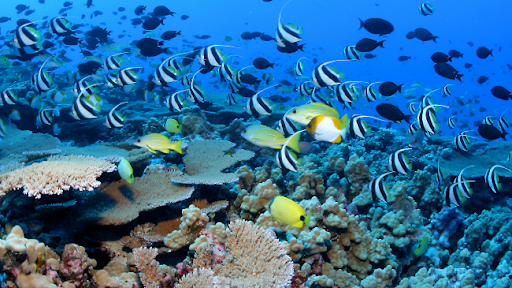
The ocean is a huge body of salt water that covers over 71 percent of Earth’s surface. The planet has one global ocean, however, because of oceanographers and global politics, the ocean has divided it into four different regions: the Pacific, Atlantic, Indian, and Arctic oceans.
Beginning in the 20th century, some oceanographers began to call the waters around Antarctica the Southern Ocean. Since the ocean is so big, there is no shortage of territory for future oceanographers to explore and discover. It is not known how many different species of life exist in the ocean. With many marine ecosystems becoming endangered and even extinct in recent years because of rising sea temperatures (global warming), pollution(carbon dioxide, runoff, plastic), and other problems, some oceanographers think that ocean life is dying in bigger numbers than before.
The Pacific Ocean
The Pacific Ocean is the biggest Ocean on planet Earth. It is found along the western coast of the United States and stretches all the way to Southeast Asia, the eastern side of Australia, and the west coast of South America.
How Big is The Pacific?
The Pacific Ocean covers 165,250,000 square km (63,800,000 sq. mi), which is about 46% of Earth’s water surface.
The Atlantic Ocean
The Atlantic is the second-largest ocean on the planet and gets its name from Greek mythology: it is the “Sea of Atlas,” where Atlas is a titan who supposedly led a revolution in Olympus. His punishment for the crime is to hold Earth on his shoulders for all of eternity.
How Big is The Atlantic?
The Atlantic Ocean is about 106,460,000 square km (41,100,000 sq. mi) in area and its volume is 354,700,000 km³. It covers about one-fifth of the Earth’s surface.






